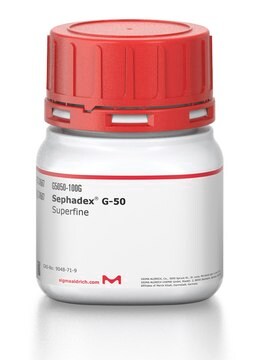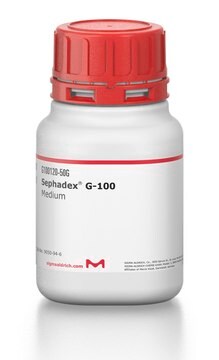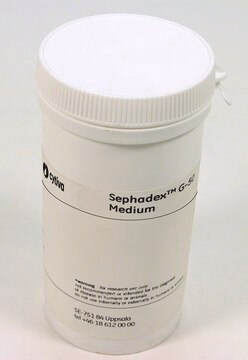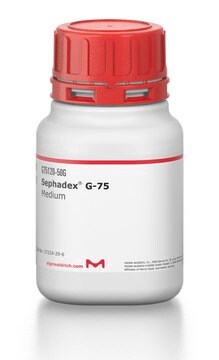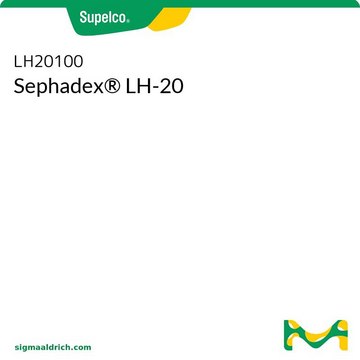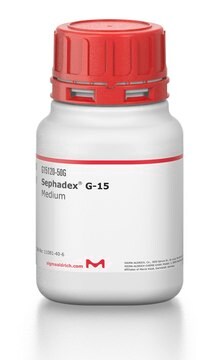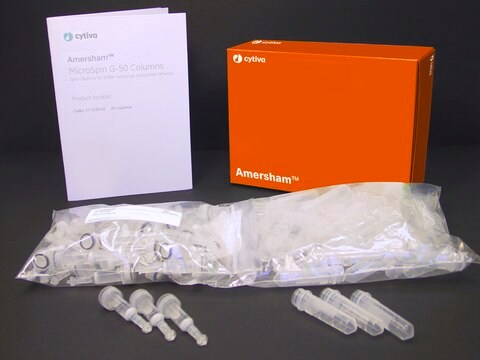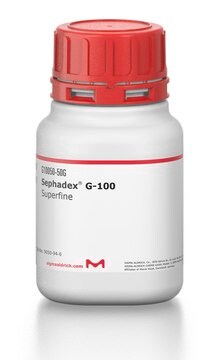G5080
Sephadex® G-50
Fine
Synonym(s):
Gel filtration resin, Sephadex G-50 Fine Medium
Select a Size
Select a Size
About This Item
Recommended Products
Quality Level
technique(s)
affinity chromatography: suitable
matrix active group
phase
swelling
1 g swells to 9-11 mL
bead size
20-80 μm
application(s)
life science and biopharma
compatibility
Cytiva
General description
Fractionation Range (MW)
Globular Proteins: 1,500 - 30,000
Dextrans: 500 - 10,000
Application
- to remove the non-entrapped carboxyfluorescein (CF) from the liposome suspension[1]
- in the purification of monoclonal antibody (mAb) humanized MN-14 by centrifuged size-exclusion chromatography[2]
- in desalting the recombinant enzymes eluted in the fraction five and six[3]
- the separation of low and high molecular weight molecules
- affinity chromatography, protein chromatography, and gel filtration chromatography
Features and Benefits
- Desalts, removes contaminants, and transfers to a new buffer in one step.
- Suitable for DNA purification from small molecules using gel filtration.
- Features a small bead size, resulting in shorter diffusion distances.
- Considered a classic gel filtration resin.
- Desalting with Sephadex is considered superior to dialysis because it saves time, has a low dilution factor, and recovers high activity even with minute amounts of sample
Other Notes
G5080-500G′s updated product number is GE17-0042-02
Legal Information
replaced by
Storage Class Code
11 - Combustible Solids
WGK
WGK 3
Flash Point(F)
Not applicable
Flash Point(C)
Not applicable
Personal Protective Equipment
Certificates of Analysis (COA)
Search for Certificates of Analysis (COA) by entering the products Lot/Batch Number. Lot and Batch Numbers can be found on a product’s label following the words ‘Lot’ or ‘Batch’.
Already Own This Product?
Find documentation for the products that you have recently purchased in the Document Library.
Customers Also Viewed
Our team of scientists has experience in all areas of research including Life Science, Material Science, Chemical Synthesis, Chromatography, Analytical and many others.
Contact Technical Service